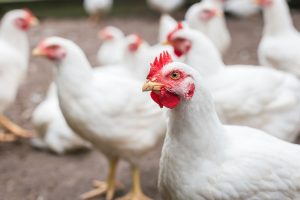The ongoing spread of High Pathogenicity Avian Influenza in different regions of the world, alongside the recent detections of cases in cattle, is raising concerns within the international community.
The recently reported detections of HPAI in dairy cattle in the United States of America, showing clinical signs such as decreased lactation, reduced appetite, lethargy, fever, and dehydration, have raised concerns since such infections of cattle could indicate an increased risk of H5N1 viruses becoming better adapted to mammals, and potentially spilling over to humans and other livestock.
Meanwhile, the American Association of Bovine Practitioners is now referring to the strain of HPAI impacting dairy cattle as Bovine Influenza A Virus.
“The virus isolated from affected animals in herds matching the clinical signs has been identified as avian influenza virus Type A H5N1. The virus causes highly pathogenic avian influenza in birds, however the disease syndrome in cattle does not cause high morbidity or mortality as it does in birds. The AABP does not believe that this disease should be referenced as ‘HPAI in cattle’ or ‘bird flu in cattle’ due to these differences,” wrote AABP Executive Director Fred Gingrich, DVM, and President Michael Capel, DVM.

WOAH reminds its 183 Members that, based on the available information, restrictions on the movement of healthy cattle and their products are not recommended unless justified by an import risk analysis conducted according to the WOAH Terrestrial Animal Health Code Chapter 2.1.
WOAH has also issued the following recommendations:
- Maintain enhanced avian influenza surveillance in domestic and wild birds.
- Monitor and investigate cases in non-avian species, including cattle and other livestock populations, that show clinical signs compatible with avian influenza.
- Report cases of HPAI in all species, including unusual hosts, to WOAH through its World Animal Health Information System (WAHIS). Genetic sequences of avian influenza viruses should be shared in publicly available databases.
- Prevent the introduction and spread of the disease by implementing strict biosecurity measures in livestock holdings and employing good production practices when handling animal products such as raw milk and meat from suspected or confirmed cases.
- Protect humans in close contact with or handling sick cattle or other sick livestock and their products. Exposed humans should always take precautionary measures, including wearing personal protective equipment and implementing standard food safety measures when handling animal products from exposed livestock.
- Avoid implementing unjustified trade restrictions. Import risk management measures should be scientifically justified and in line with the WOAH International Standards.


